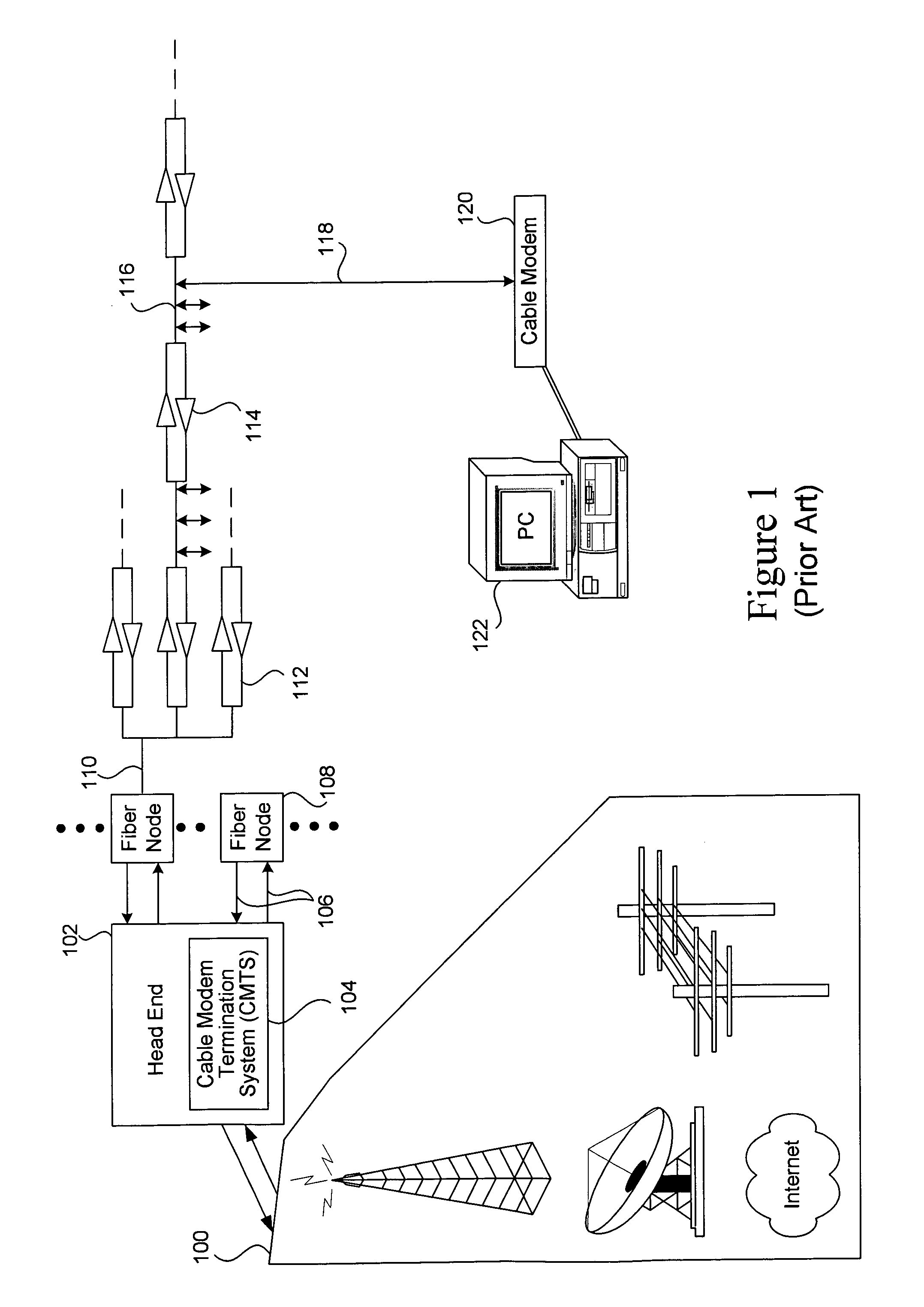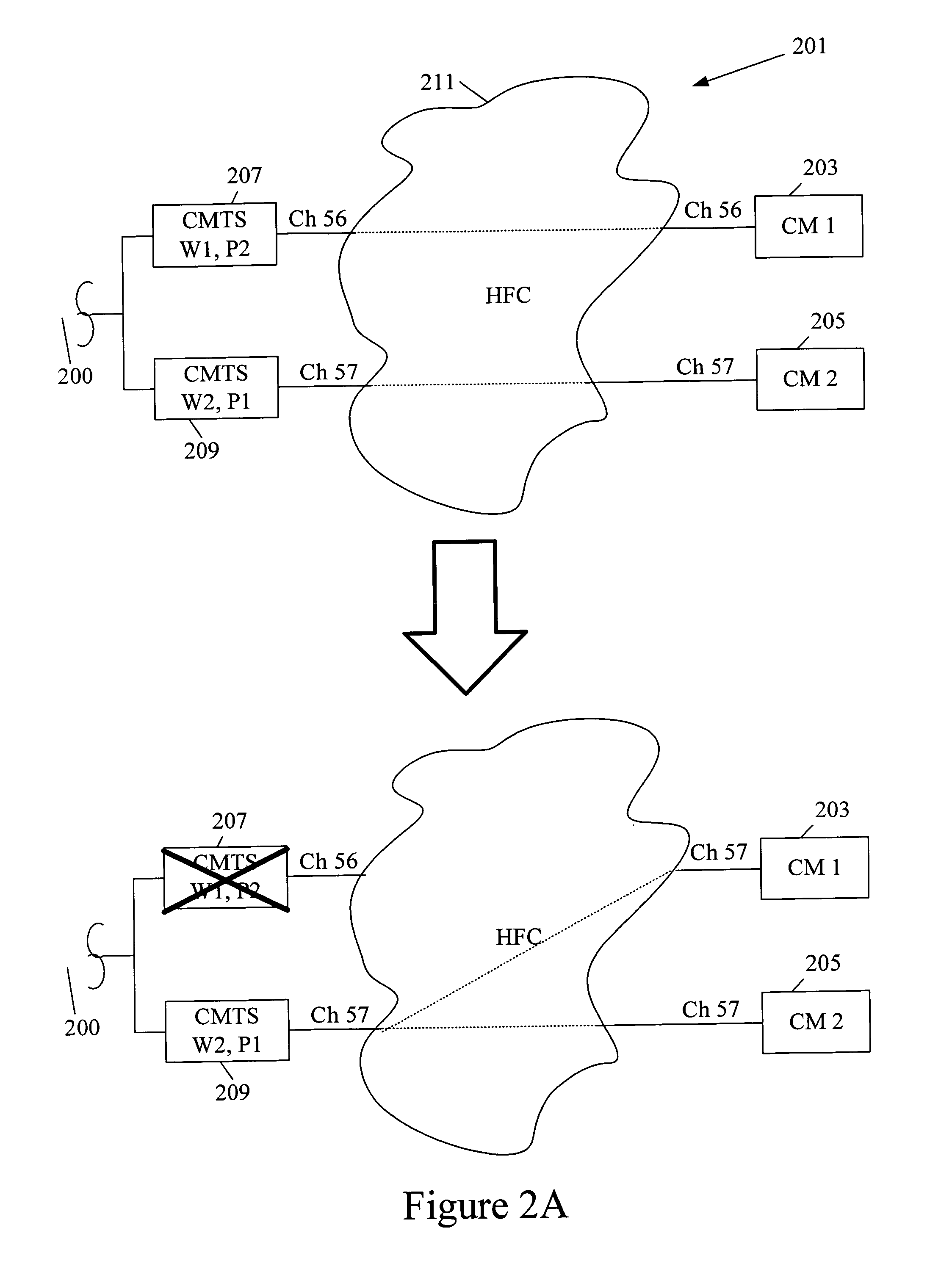Method for a cable modem to rapidly switch to a backup CMTS
a technology of backup and modem, applied in the field of digital cable network technology, can solve the problems of cable modem service disruption or service outage, unfavorable service type, and difficult task of providing reliable high-quality voice/video communication over such networks, and achieve the effect of reducing delays and fewer significant disruptions
- Summary
- Abstract
- Description
- Claims
- Application Information
AI Technical Summary
Benefits of technology
Problems solved by technology
Method used
Image
Examples
Embodiment Construction
[0032]A. Topologies Examples
[0033]FIGS. 2A–2E present various cable network topologies that may be used in implementing the present invention. FIG. 2A depicts a network topology deemed “1:1” in which the network includes two CMTSs. Both are working CMTSs and both provide protection for the other. Thus, if one of the two CMTSs fails, the other one assumes the functions of the failed CMTS, while maintaining its own functions.
[0034]As shown in FIG. 2A, a cable network system 201 includes first and second cable modems 203 and 205. Each connects to a separate CMTS. Specifically, modem 203 connects to a CMTS 207 via a downstream channel 56 and modem 205 connects to a CMTS 209 via a downstream channel 57. Each connection is made through an HFC network 211. Communications between the cable modems and external sources are made via a connection 200.
[0035]Note that FIG. 2A is greatly simplified. Normally, a given CMTS or CMTS interface services many cable modems. For example, a single CMTS may...
PUM
 Login to View More
Login to View More Abstract
Description
Claims
Application Information
 Login to View More
Login to View More - R&D
- Intellectual Property
- Life Sciences
- Materials
- Tech Scout
- Unparalleled Data Quality
- Higher Quality Content
- 60% Fewer Hallucinations
Browse by: Latest US Patents, China's latest patents, Technical Efficacy Thesaurus, Application Domain, Technology Topic, Popular Technical Reports.
© 2025 PatSnap. All rights reserved.Legal|Privacy policy|Modern Slavery Act Transparency Statement|Sitemap|About US| Contact US: help@patsnap.com



